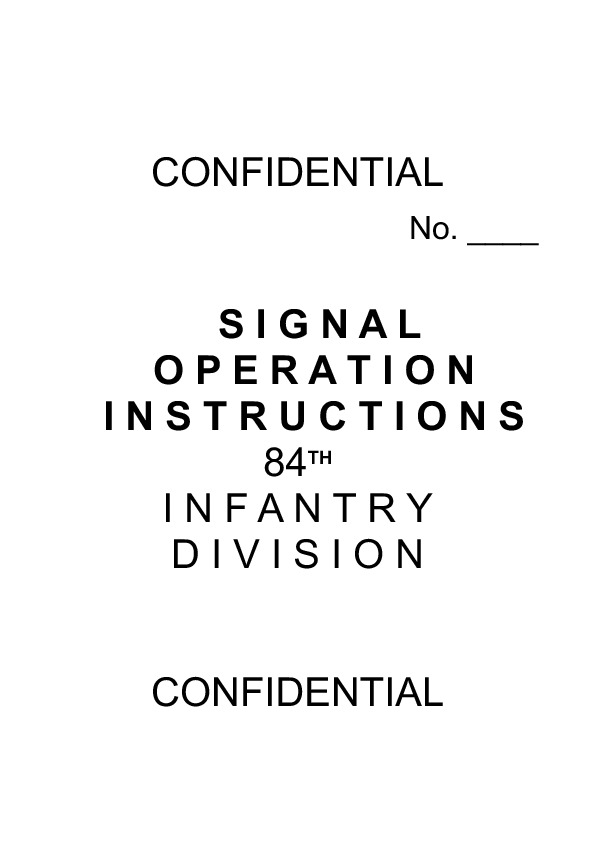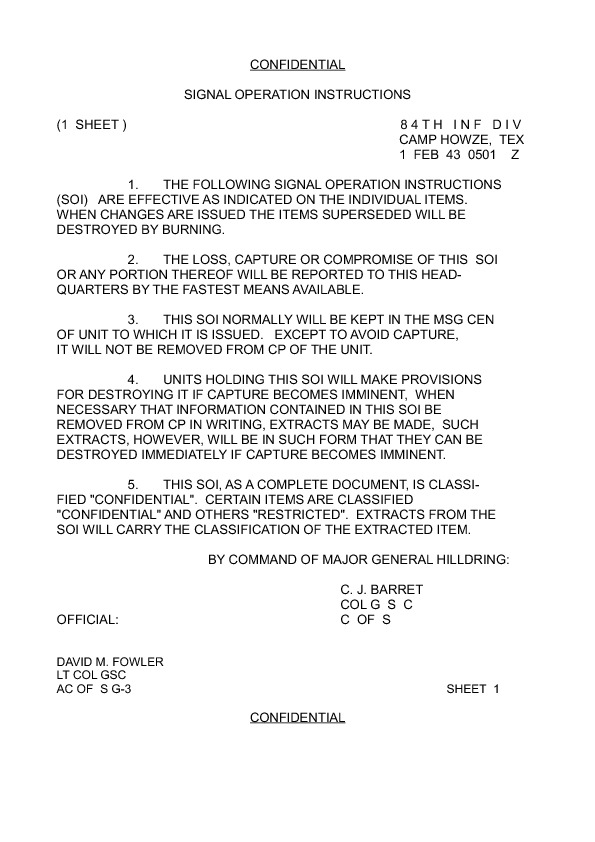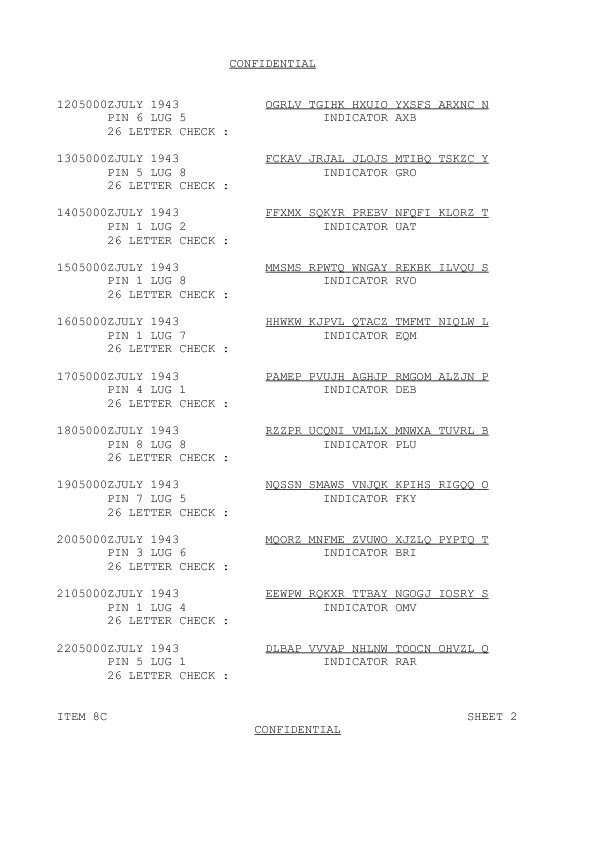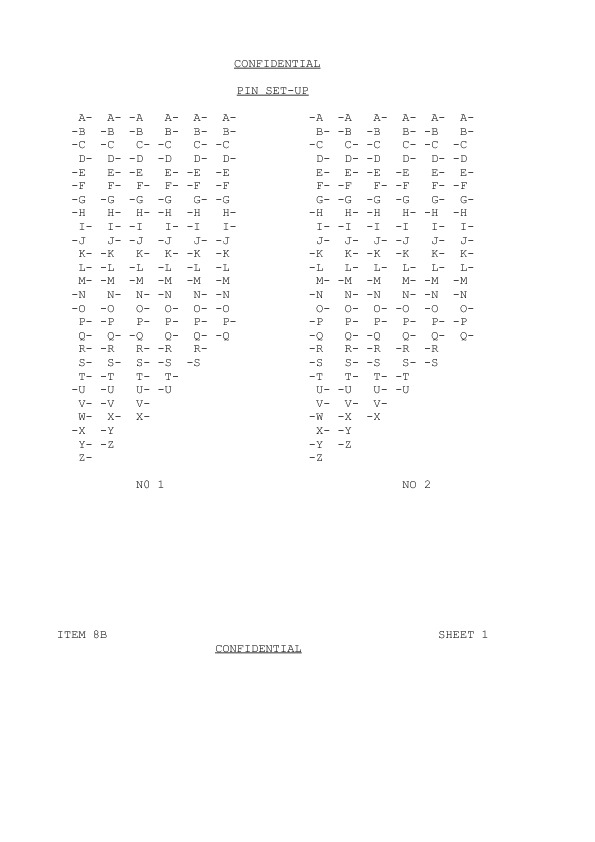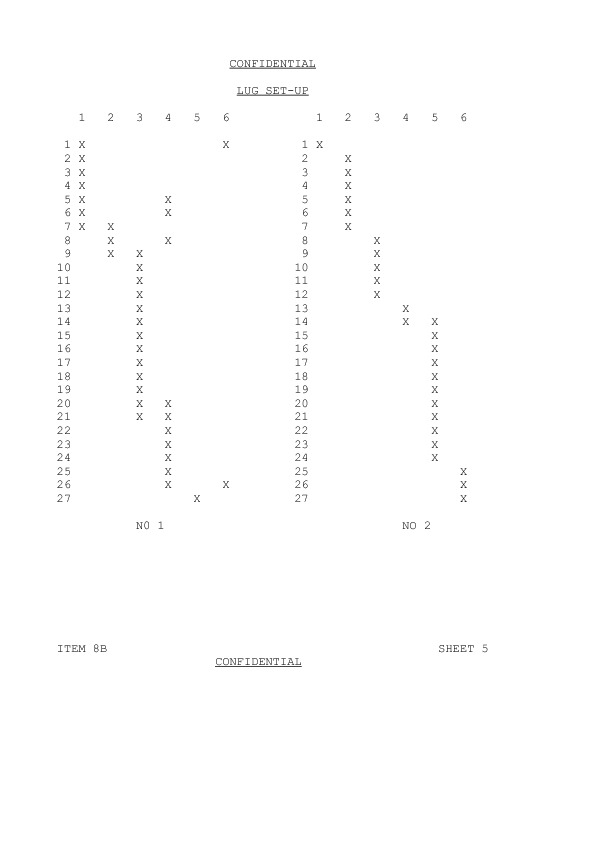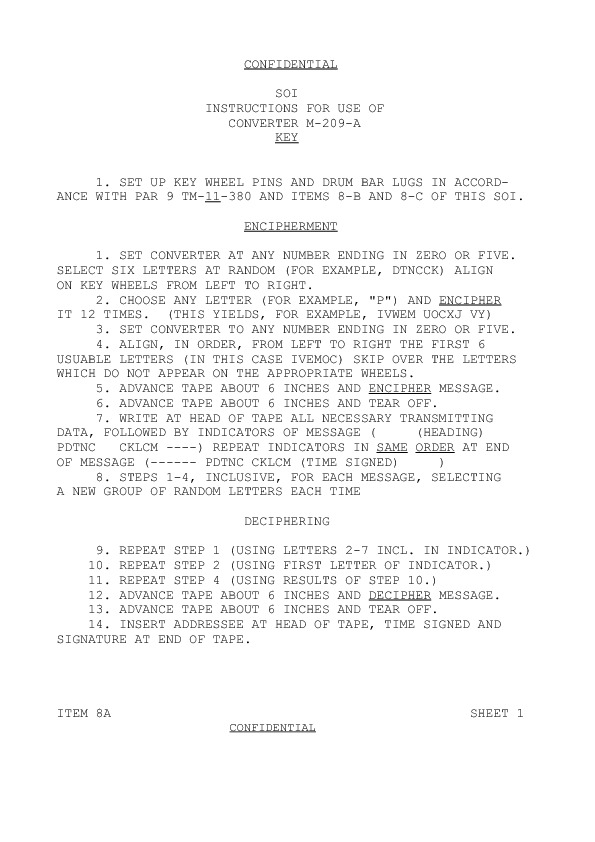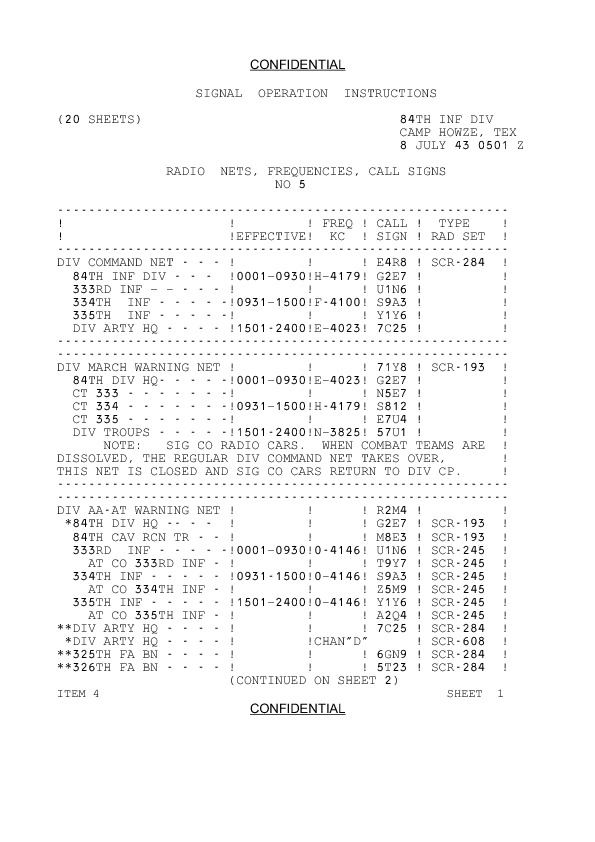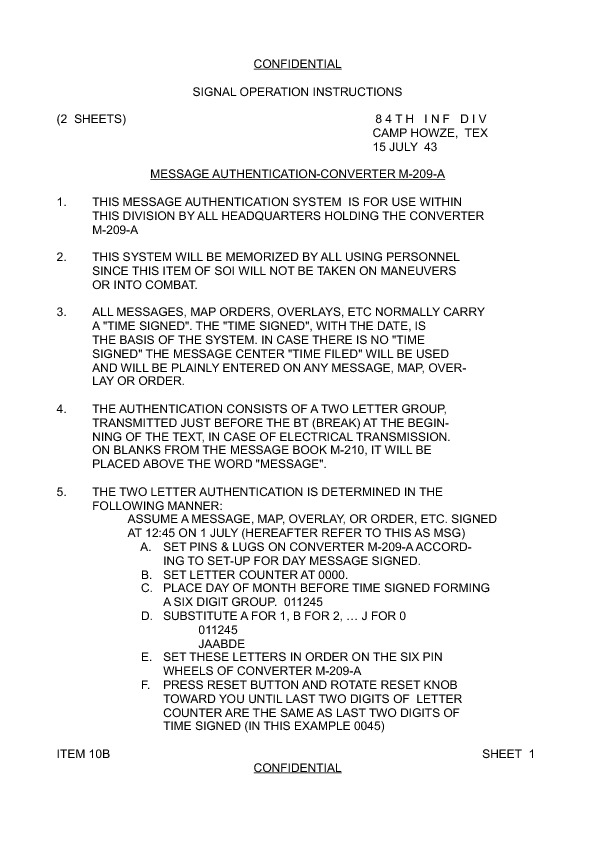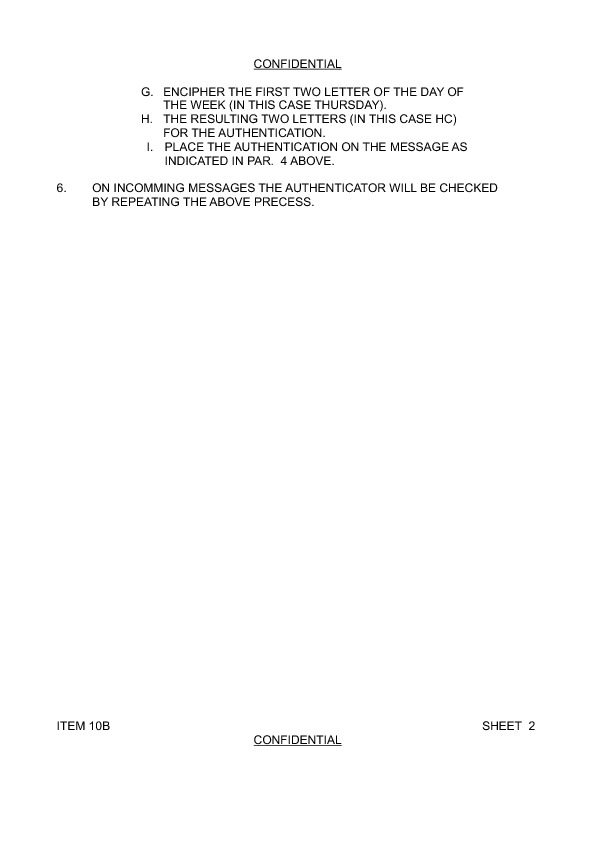M-209 - SOI, a genuine key list
An exercpt from SOI with a complete key list.
An invented SOI but which respects standards.
Introduction
During the WWII, the US Army distributed M-209 key lists of a month within a document called SOI (Signal Operation Instructions). This web page describes the content of a SOI and provides excerpts from a recently declassified SOI.
The 84th Infantry Division was activated on last 1942. It arrived in the UK on October 1944, and in France in November. In 2011, The US Army unclassified the SOI used during its training in the USA in 1943.
SOI content
SOI document does not only contains the M-209 key lists but all instructions associated with transmissions, for example the radio call signs.
The content of 84th Infantry Division SOI:
- Index
- Distribution (the distribution list of the SOI)
- Communication instructions (general recommendations about transmissions)
- Radio Nets, Frequencies, Call Signs
- Telephone code names
- Telephone numbers
- Prearranged message code
- Instructions fo use of converter M-209-A (Indicator system)
- PIN & LUG set-up for converter M-209-A
- Key wheel Pin and Drum bar set-ups for converter M-209-A
- Map coordinate code
- Message authentication code
- Message authentication code - Converter M-209-A
- Telephone authentication code
- Identication panel code
- Sound signal
- Aircraft signals
- Visual signals
- Pyrotechnic codes
- Smoke signal code
Before the Index, an introduction recalls the security measures to be taken in handling the SOI document.
Dimensions of a SOI
The dimensions of a SOI changed:- During WWII, the dimensions of a SOI document are the american standard: US letter (8 1/2 x 11 inches [21.6 x 27.9 cm]).
- In 1951, the dimensions of a SOI are smaller: 4 1/4 x 6 1/4 inches [10.795 x 15.873 cm]. You can remark these new dimensions are equivalent of a TM 11-380 manual. These documents (manual and SOI) may be placed inside the M-209 pouch.
Key List
The three components of a key list
The key lists occupy several pages. They were only valid for the month of July 1943. They are divided into several parts:- Four pages of Pins settings with two settings by page. In total, eight numbered pins settings.
- Four pages of lugs settings with two settings by page. In total, eight numbered lugs settings.
-
Finally, three pages of settings. These pages were the most important one
because for each day they indicate the complete settings :
- The lugs settings by its number.
- The pins settings by its number.
- The twenty-six letters check.
- The three letters indicator of the division for the day.
The complete setting of the 28th July is composed of the pins setting number 3 and lug setting number 4. The associate indicator is IBR.
In this system, the same pins setting is used several times. For example the pins setting number 7 was used on the 2nd July, 4th July, 8th July, 11th July and 27th July. For the lugs settings it is the same practice. For example, the lugs setting number 4 was used on the 8th July, 21th July, 23th July and 28th July.
A small challenge
You can try to decipher this message.
PDTNC CKUAT ASFEO CZQSZ XAAQF
YUAVG TKVRD GTOOF PDTNC CKUAT
Structure of keys
In the 1942 TM 11-380 Manual, 40% to 60% of pins must be in effective position. This rule was respected. Here the percentage of the eight pins settings: 52%, 52%, 52%, 47%, 47%, 50% and 50%.
In the 1944 Manual, the numbers of pins in the same position (effective or ineffective) in a row must be less than or equal to 6. This rule doesn't appear in the 1942 Manual. We can see several times 7 lugs in effective position in a row. I Even saw a row of 13 lugs in effective position!
The number of lug overlaps allowed is between 1 and 12. In the eight lug settings, this rule was respected. Here the number of lug overlaps of the eight lugs setting: 9, 1, 6, 3, 5, 6, 7, 6.
The indicators
Call Signs
Authentication of a message thanks to M-209
The SOI describes a method for authenticating a document (message, map, ...) by means of the M-209.
The principle is to encrypt the day of the week with the timestamp previously translated into letters. The two first letters obtained were added to the document. The addressee can verify that the sender shares the same Lugs and Pins setting and so he is in the same key net.
An operational SOI (used at Omaha Beach)
On D-day (6th June), the HQ of the 1st Bn of the 116th regt, landed at 07:20AM. The members of the HQ took refuge under the cliff near by Vierville.The M-209 of the 1st battalion officer (Lt Robert Hackett) was found in 1945 under the cliff in a waterproof bag, in working order with all the secret codes in use at that time (the SOI of 1st US Infantry DIV).
The following page, shows pictures of the material found. In 2005, it was in the hall of honor of the French 18th Signal Regiment (18ieme régiment de transmissions) in Carpiquet.
Unfortunately the 18th regiment was disbanded in 2010. Its former members were incorporated into the new regiment transmissions and command support (RTAC) of Douai.
In 2013 I tried to contact this regiment to know what had become the M-209 and the SOI. I have not had a reply.
References
- SIGNAL OPERATION INSTRUCTIONS 84th INFANTRY DIVISION (1943) SOI.
- Converter M-209 B, Mark J. Blair, May 1 2009 NF6X
- TM 11-380 1942
- TM 11-380 1944
- "Le débarquement de 1944 à Omaha Beach" [Landing at Omaha Beach], (The trophies kept by the French 18th signal regiment)
